The flag of Mauritania is an intriguing amalgamation of colors and symbols that encapsulate the essence of the nation. Serving as a visual narrative, the flag melds the country’s geographical features, diverse roots, and forward-looking vision into a single emblem that resonates with its people and garners attention from across the globe.
Mauritania Flag
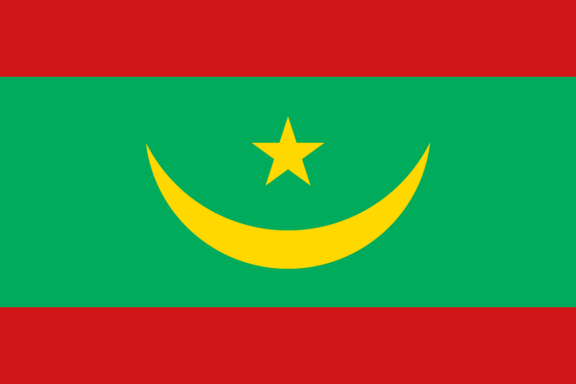
The flag of Mauritania stands out for its distinctive design elements, which include an upward-pointed crescent and star at the center of a green field. Introduced in 1959, the flag’s layout employs Islamic symbols, reflecting the dominant religion in the country.
While the flag may appear simple, each component has been carefully chosen to convey specific aspects of Mauritania’s cultural and religious identity. This makes the flag a national symbol and a visual narrative that resonates deeply with its citizens.
Mauritania Flag: Color Palette
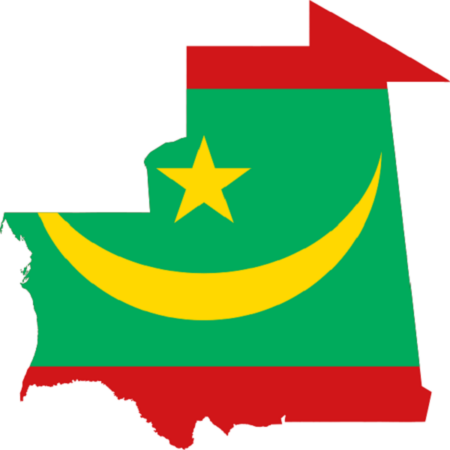
Mauritania Flag Emoji: 🇲🇷
Mauritania’s flag’s color palette is striking and meaningful, consisting of green and gold elements. These chosen hues work harmoniously to create a visually appealing emblem that immediately captures attention. The upcoming section will delve into the specific symbolism behind each color.
Meaning of Each Color
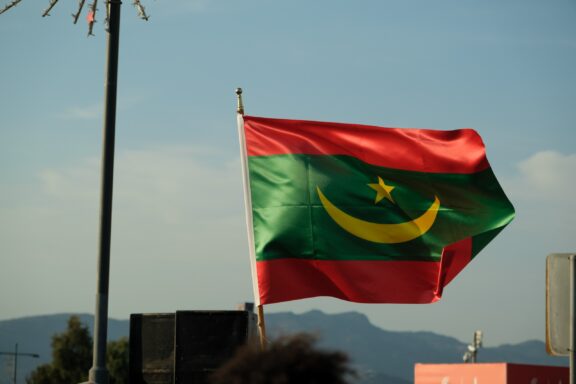
Red
The red stripes on Mauritania’s flag symbolize the Mauritanian people’s efforts and sacrifices in defending their territory, often illustrated by the notion of bloodshed for this cause.
Positioned at the top and bottom of the flag, these stripes may also be perceived as a protective barrier, encapsulating the nation’s enduring resilience against adversities.
Green
The green on the flag holds a dual significance. Primarily, it represents Islam, which is the predominant religion in Mauritania. Additionally, green symbolizes hope for a prosperous future, possibly alluding to the fertile lands that sustain the population.
Yellow (Gold)
The golden crescent moon and star are traditional symbols of Islam, representing guidance, enlightenment, and faith. The gold color also reflects the vast expanse of the Sahara desert, illustrating the nation’s rich history and its natural landscapes that gleam under the sunlight.
Moreover, the crescent can symbolize a new beginning, hinting at the dawn of a new era post-independence, with the star as a guiding light for the nation’s path forward.
Mauritania Coat of Arms
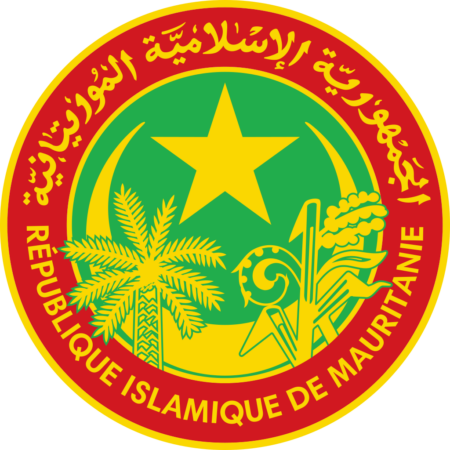
The coat of arms of Mauritania, adopted on August 15, 2017, is a visual representation that intertwines symbolic elements from the national flag, including the distinctive crescent moon and star.
Beyond these primary symbols, other graphical elements in the emblem, such as the dromedary camel and Moorish spears, speak to Mauritania’s rich cultural tapestry. Blue wavy lines, possibly hinting at the country’s aquatic resources, complement the design.
The national motto is central to the emblem’s message, although the specific wording isn’t detailed in the available sources. Altogether, the coat of arms is a testament to Mauritania’s identity, echoing themes of unity, heritage, and resilience.
Historical Evolution and the Meaning Behind Changes
Mauritania’s flag has undergone evolution, reflecting the nation’s journey through history. Initially, the country’s flag bore a significant resemblance to other nations in the Maghreb region, showcasing the shared history and cultural ties.
However, in 1959, upon approaching independence, Mauritania introduced a unique flag design featuring green and gold as its primary colors.
The green color represented Islam, the country’s predominant religion, while the gold symbolized the vast expanses of the Sahara Desert, which dominates much of Mauritania’s landscape.
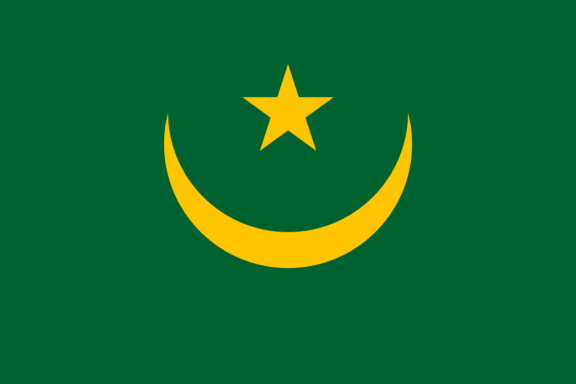
The flag’s design remained consistent until 2017, when a significant change occurred. The two red stripes, one at the top and one at the bottom were added. These stripes signify the sacrifices and bloodshed by Mauritanians in their fight for freedom and independence.
The introduction of red was also a nod to Pan-Africanism, reflecting Mauritania’s connection to the broader African continent and its collective struggle for liberation and progress.
This evolution showcases the country’s unique identity and captures the changing socio-political landscape and its aspirations to forge a distinct path while recognizing its broader affiliations.
Overall Symbolic Meaning of the Flag
Mauritania’s flag weaves a narrative of faith, nature, and sacrifice. The prominent green speaks to the nation’s deep-rooted Islamic beliefs. Gold paints a picture of the vast and relentless Sahara, echoing the endurance and resilience of its people.
Red bands, though a recent addition, emphasize the courage and determination of Mauritanians in their pursuit of sovereignty. Together, these colors form a tapestry that tells the story of a country balancing tradition with progress, ever proud of its place in the African tapestry and the wider world.
Similar Flags to the Flag of Mauritania
Drawing parallels between national symbols can uncover fascinating intersections of history, culture, and geopolitics. As we examine the flag of Mauritania, several other nations present flags with resemblances, each weaving its tapestry of symbolism and significance.
Algeria
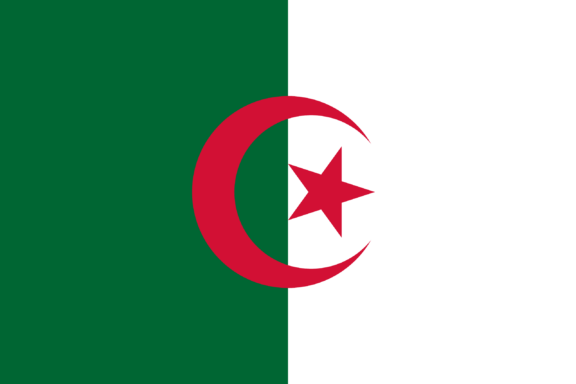
The Algerian flag showcases green and red, much like Mauritania’s. Most notably, both banners display the crescent moon and star, symbolizing their profound Islamic roots. The similarities can be attributed to their shared Islamic heritage, with the green embodying peace and the religion of Islam.
Azerbaijan
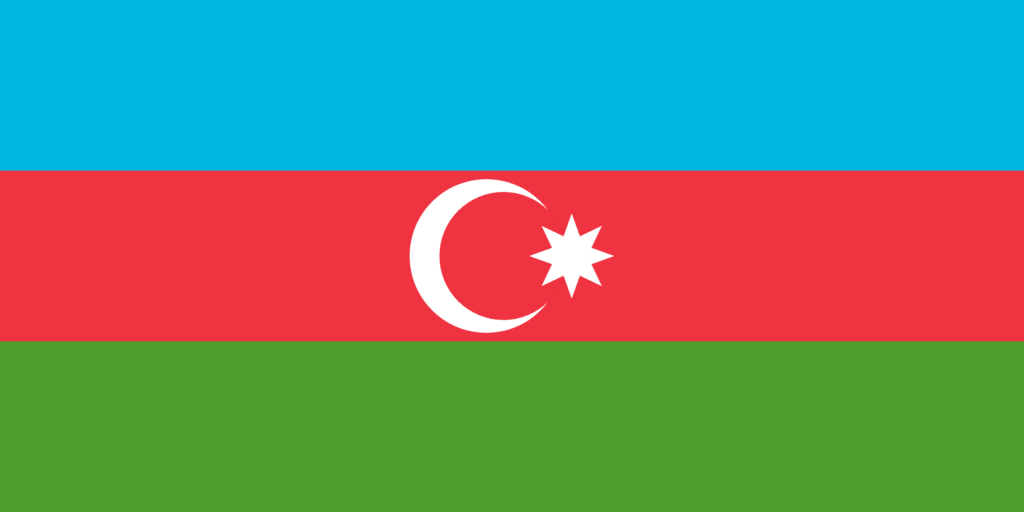
The flag of Azerbaijan features a crescent moon and star, hinting at a shared Islamic influence, albeit in a different configuration. Despite the two countries being geographically distant, their flags mirror their commitments to Islamic traditions.
Ghana
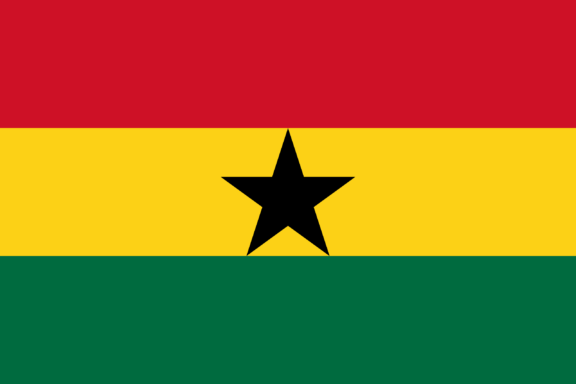
While Ghana’s flag doesn’t have the crescent moon and star, its utilization of the red, green, and gold colors resonates with Mauritania’s. Though these colors have varied interpretations across African nations, they often symbolize shared post-colonial experiences and aspirations for the future.
In the context of Ghana and Mauritania, the color schemes speak to a shared African identity and the continent’s journey through history.
Conclusion
Mauritania’s flag is a vivid emblem of its history, values, and natural beauty. Amidst global banners, it holds a unique spot. With its distinctive colors and symbols, this flag bridges the past with the present. For Mauritanians, it’s more than just a national symbol; it’s a testament to their shared experiences and aspirations.
Image Sources and Copyright Information
- Mauritania Flag Against Sky Background: © arda savasciogullari/Shutterstock